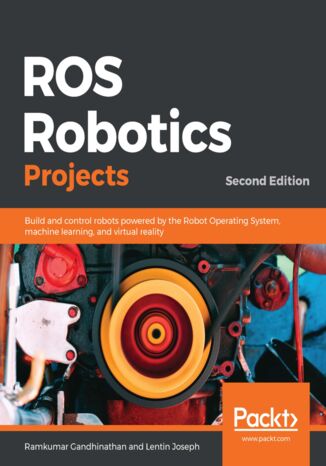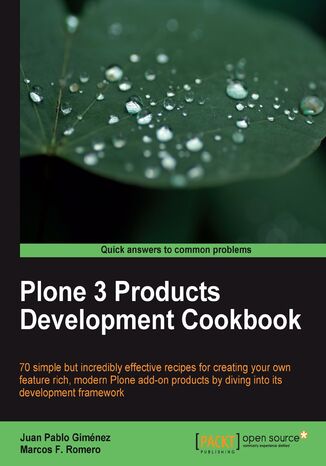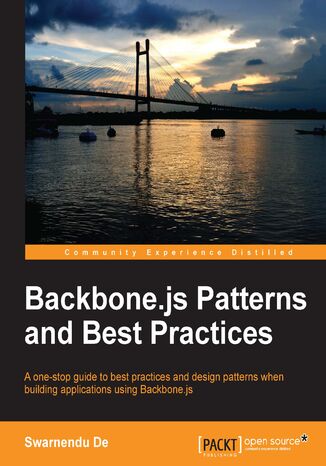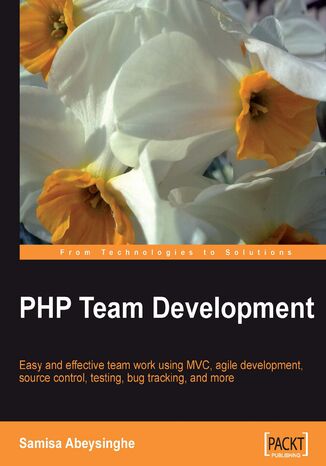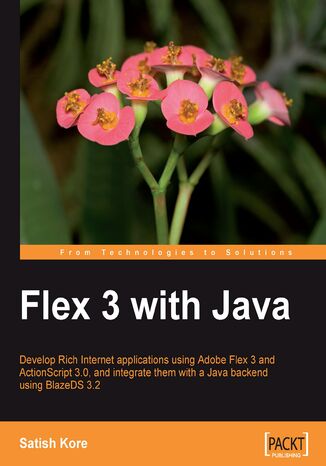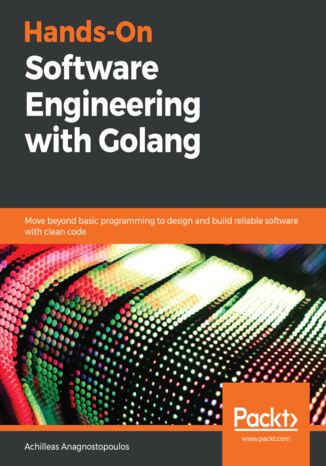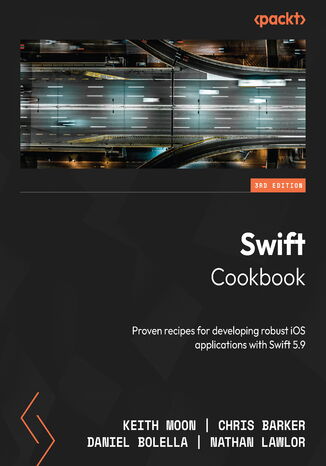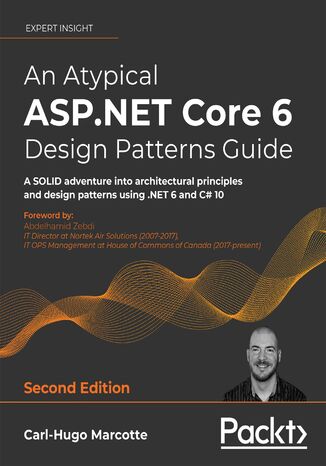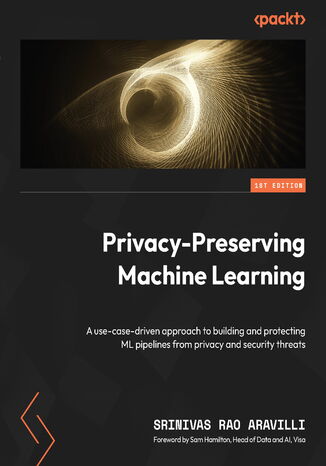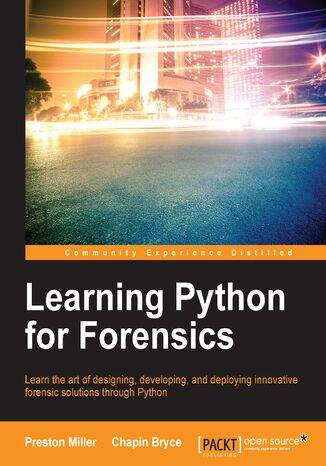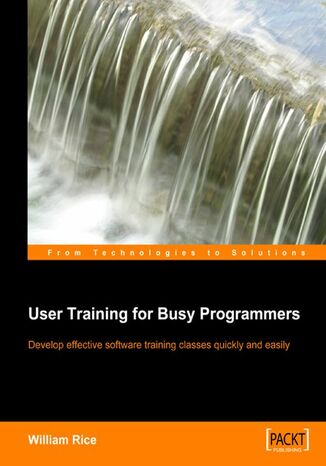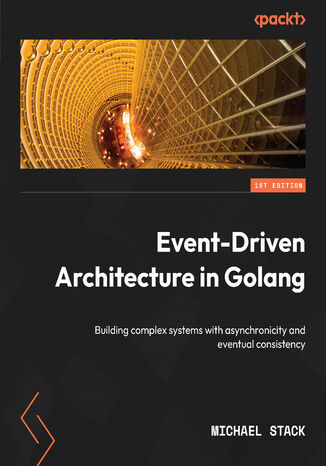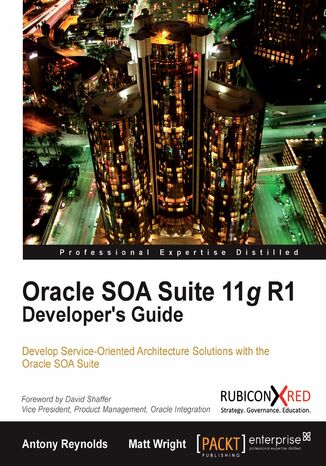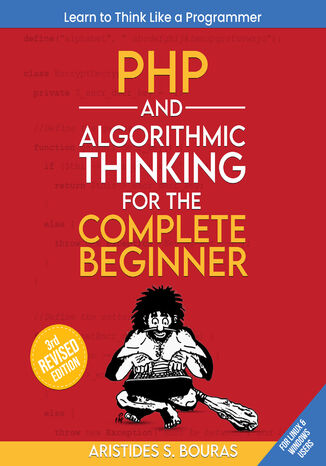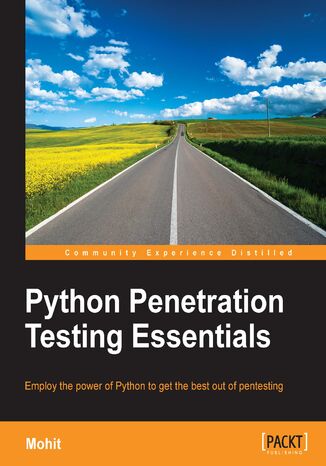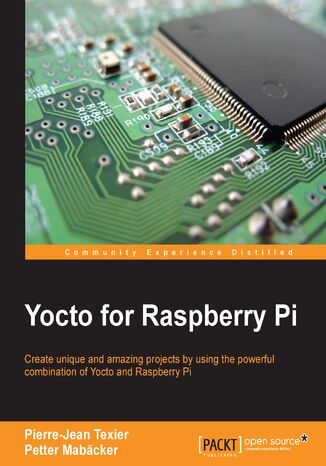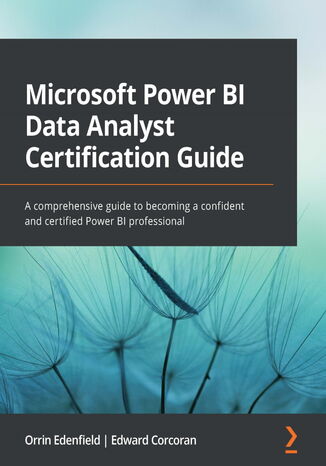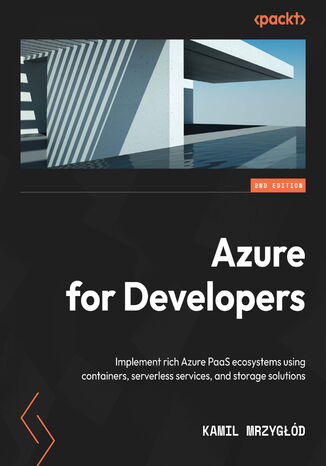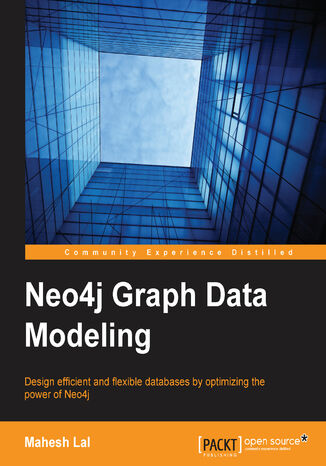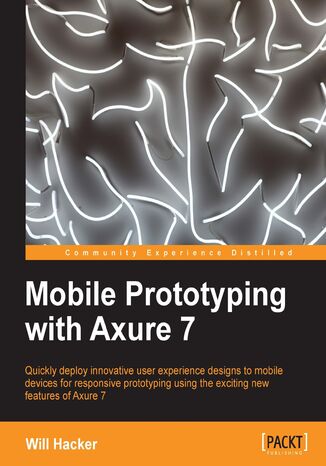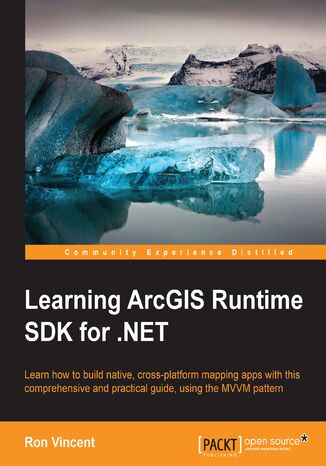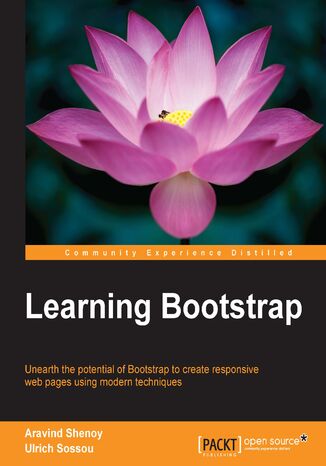Categories
Ebooks
-
Business and economy
- Bitcoin
- Businesswoman
- Coaching
- Controlling
- E-business
- Economy
- Finances
- Stocks and investments
- Personal competence
- Computer in the office
- Communication and negotiation
- Small company
- Marketing
- Motivation
- Multimedia trainings
- Real estate
- Persuasion and NLP
- Taxes
- Social policy
- Guides
- Presentations
- Leadership
- Public Relation
- Reports, analyses
- Secret
- Social Media
- Sales
- Start-up
- Your career
- Management
- Project management
- Human Resources
-
For children
-
For youth
-
Education
-
Encyclopedias, dictionaries
-
E-press
- Architektura i wnętrza
- Health and Safety
- Biznes i Ekonomia
- Home and garden
- E-business
- Ekonomia i finanse
- Esoterecism
- Finances
- Personal finance
- Business
- Photography
- Computer science
- HR & Payroll
- For women
- Computers, Excel
- Accounts
- Culture and literature
- Scientific and academic
- Environmental protection
- Opinion-forming
- Education
- Taxes
- Travelling
- Psychology
- Religion
- Agriculture
- Book and press market
- Transport and Spedition
- Healthand beauty
-
History
-
Computer science
- Office applications
- Data bases
- Bioinformatics
- IT business
- CAD/CAM
- Digital Lifestyle
- DTP
- Electronics
- Digital photography
- Computer graphics
- Games
- Hacking
- Hardware
- IT w ekonomii
- Scientific software package
- School textbooks
- Computer basics
- Programming
- Mobile programming
- Internet servers
- Computer networks
- Start-up
- Operational systems
- Artificial intelligence
- Technology for children
- Webmastering
-
Other
-
Foreign languages
-
Culture and art
-
School reading books
-
Literature
- Antology
- Ballade
- Biographies and autobiographies
- For adults
- Dramas
- Diaries, memoirs, letters
- Epic, epopee
- Essay
- Fantasy and science fiction
- Feuilletons
- Work of fiction
- Humour and satire
- Other
- Classical
- Crime fiction
- Non-fiction
- Fiction
- Mity i legendy
- Nobelists
- Novellas
- Moral
- Okultyzm i magia
- Short stories
- Memoirs
- Travelling
- Narrative poetry
- Poetry
- Politics
- Popular science
- Novel
- Historical novel
- Prose
- Adventure
- Journalism, publicism
- Reportage novels
- Romans i literatura obyczajowa
- Sensational
- Thriller, Horror
- Interviews and memoirs
-
Natural sciences
-
Social sciences
-
School textbooks
-
Popular science and academic
- Archeology
- Bibliotekoznawstwo
- Cinema studies
- Philology
- Polish philology
- Philosophy
- Finanse i bankowość
- Geography
- Economy
- Trade. World economy
- History and archeology
- History of art and architecture
- Cultural studies
- Linguistics
- Literary studies
- Logistics
- Maths
- Medicine
- Humanities
- Pedagogy
- Educational aids
- Popular science
- Other
- Psychology
- Sociology
- Theatre studies
- Theology
- Economic theories and teachings
- Transport i spedycja
- Physical education
- Zarządzanie i marketing
-
Guides
-
Game guides
-
Professional and specialist guides
-
Law
- Health and Safety
- History
- Road Code. Driving license
- Law studies
- Healthcare
- General. Compendium of knowledge
- Academic textbooks
- Other
- Construction and local law
- Civil law
- Financial law
- Economic law
- Economic and trade law
- Criminal law
- Criminal law. Criminal offenses. Criminology
- International law
- International law
- Health care law
- Educational law
- Tax law
- Labor and social security law
- Public, constitutional and administrative law
- Family and Guardianship Code
- agricultural law
- Social law, labour law
- European Union law
- Industry
- Agricultural and environmental
- Dictionaries and encyclopedia
- Public procurement
- Management
-
Tourist guides and travel
- Africa
- Albums
- Southern America
- North and Central America
- Australia, New Zealand, Oceania
- Austria
- Asia
- Balkans
- Middle East
- Bulgary
- China
- Croatia
- The Czech Republic
- Denmark
- Egipt
- Estonia
- Europe
- France
- Mountains
- Greece
- Spain
- Holand
- Iceland
- Lithuania
- Latvia
- Mapy, Plany miast, Atlasy
- Mini travel guides
- Germany
- Norway
- Active travelling
- Poland
- Portugal
- Other
- Przewodniki po hotelach i restauracjach
- Russia
- Romania
- Slovakia
- Slovenia
- Switzerland
- Sweden
- World
- Turkey
- Ukraine
- Hungary
- Great Britain
- Italy
-
Psychology
- Philosophy of life
- Kompetencje psychospołeczne
- Interpersonal communication
- Mindfulness
- General
- Persuasion and NLP
- Academic psychology
- Psychology of soul and mind
- Work psychology
- Relacje i związki
- Parenting and children psychology
- Problem solving
- Intellectual growth
- Secret
- Sexapeal
- Seduction
- Appearance and image
- Philosophy of life
-
Religion
-
Sport, fitness, diets
-
Technology and mechanics
Audiobooks
-
Business and economy
- Bitcoin
- Businesswoman
- Coaching
- Controlling
- E-business
- Economy
- Finances
- Stocks and investments
- Personal competence
- Communication and negotiation
- Small company
- Marketing
- Motivation
- Real estate
- Persuasion and NLP
- Taxes
- Social policy
- Guides
- Presentations
- Leadership
- Public Relation
- Secret
- Social Media
- Sales
- Start-up
- Your career
- Management
- Project management
- Human Resources
-
For children
-
For youth
-
Education
-
Encyclopedias, dictionaries
-
E-press
-
History
-
Computer science
-
Other
-
Foreign languages
-
Culture and art
-
School reading books
-
Literature
- Antology
- Ballade
- Biographies and autobiographies
- For adults
- Dramas
- Diaries, memoirs, letters
- Epic, epopee
- Essay
- Fantasy and science fiction
- Feuilletons
- Work of fiction
- Humour and satire
- Other
- Classical
- Crime fiction
- Non-fiction
- Fiction
- Mity i legendy
- Nobelists
- Novellas
- Moral
- Okultyzm i magia
- Short stories
- Memoirs
- Travelling
- Poetry
- Politics
- Popular science
- Novel
- Historical novel
- Prose
- Adventure
- Journalism, publicism
- Reportage novels
- Romans i literatura obyczajowa
- Sensational
- Thriller, Horror
- Interviews and memoirs
-
Natural sciences
-
Social sciences
-
Popular science and academic
-
Guides
-
Professional and specialist guides
-
Law
-
Tourist guides and travel
-
Psychology
- Philosophy of life
- Interpersonal communication
- Mindfulness
- General
- Persuasion and NLP
- Academic psychology
- Psychology of soul and mind
- Work psychology
- Relacje i związki
- Parenting and children psychology
- Problem solving
- Intellectual growth
- Secret
- Sexapeal
- Seduction
- Appearance and image
- Philosophy of life
-
Religion
-
Sport, fitness, diets
-
Technology and mechanics
Videocourses
-
Data bases
-
Big Data
-
Biznes, ekonomia i marketing
-
Cybersecurity
-
Data Science
-
DevOps
-
For children
-
Electronics
-
Graphics/Video/CAX
-
Games
-
Microsoft Office
-
Development tools
-
Programming
-
Personal growth
-
Computer networks
-
Operational systems
-
Software testing
-
Mobile devices
-
UX/UI
-
Web development
-
Management
Podcasts
Ramkumar Gandhinathan, Lentin Joseph
Nowadays, heavy industrial robots placed in workcells are being replaced by new age robots called cobots, which don't need workcells. They are used in manufacturing, retail, banks, energy, and healthcare, among other domains. One of the major reasons for this rapid growth in the robotics market is the introduction of an open source robotics framework called the Robot Operating System (ROS).This book covers projects in the latest ROS distribution, ROS Melodic Morenia with Ubuntu Bionic (18.04). Starting with the fundamentals, this updated edition of ROS Robotics Projects introduces you to ROS-2 and helps you understand how it is different from ROS-1. You'll be able to model and build an industrial mobile manipulator in ROS and simulate it in Gazebo 9. You'll then gain insights into handling complex robot applications using state machines and working with multiple robots at a time. This ROS book also introduces you to new and popular hardware such as Nvidia's Jetson Nano, Asus Tinker Board, and Beaglebone Black, and allows you to explore interfacing with ROS. You'll learn as you build interesting ROS projects such as self-driving cars, making use of deep learning, reinforcement learning, and other key AI concepts.By the end of the book, you'll have gained the confidence to build interesting and intricate projects with ROS.
Marcos Romero, Marcos F. Romero, The Plone Foundation Alex Limi Toby Roberts (Project), Juan Pablo Giménez
The Plone Content Management System is one of the best open source CMS, because by using Plone's development framework you can extend its functionality according to the specific requirements of your website. The Plone framework has lots of components that can be used to create add-ons or extensions called Plone Products. You can optimize your site for improved usability, accessibility, and security by creating custom Plone products.This book covers recipes that will help you create custom Plone Products and implement them on your website. Every topic covered in this book is accompanied by essential fundamentals and step-by-step explanation that will help you understand it better. With the help of this book you will be able to create custom Plone products that are well suited for your website.You can read the whole book or just pick recipes relevant for you; cross references help you understand the recipes even if you do not read them in order.If you work through the book in order, you will start by setting up an example project of a news website that will be developed throughout the book. You will learn about all of the necessary tools a Plone developer must have before starting any project. You will develop the website further by detecting problems and debugging them. You will be able to modify code on-the-fly or get help on how to do some tasks by installing and using special tools such as IPython, ipdb, and PDBDebugMode. You will then create a new content type, based on an existing one, and wrap the final product into a Python egg.You will set up automated testing to prevent errors in code that have evolved in the development stage. You will use paster to automatically create a new custom content type from scratch. You will improve the performance of your application by creating lightweight content types and following other recipes covered in this book. Key features such as usability, internationalization, accessibility and security are covered to make sure that your development and customizations will be at the level of Plone core and its most remarkable add-on products.You will improve your user interface by creating simple client-side visual changes and server-side manipulation of objects. You will learn to create and manage portlets by using Portlet manager and customize your website by modifying third-party products. Finally you will learn to communicate with an external non-Python-based system and make your products available for future use.
Given the nature of the business environment today, organizations that want to build value-added enterprise PHP applications need a team of PHP people rather than an individual. You've got a team! What next? Customizing such applications to meet with organizational objectives and maintaining these applications over time can be quite a tedious task for your team with so many people involved.In this book, you will explore how you can break up complex PHP projects into simple sub-parts that multiple team members can work on. The book highlights the use of the MVC pattern for separating concerns in the application and agile principles to deliver code that works. You will learn to blend the simplicity and power of PHP with evolving software engineering principles and tools to easily develop code that is easy to maintain. With this book in hand, you know how to avoid getting muddled up while working in a team and achieve success on your project with effective team work.Organizations choose PHP as the preferred language for complex web applications because it is battle tested, hardened over time, and proven to work. Thus, chances of the software project you are involved with being PHP-based, are very high. Soon, you will need to explore the technical as well as non-technical aspects that are important to achieve success in PHP team projects of this kind. This book starts by explaining the need for teams working on complex software projects. You learn how you can divide the complexity of PHP projects with the help of the MVC pattern and the use of frameworks. It then discusses the need for a process and how you can choose the right process. It teaches you how to use agile principles to deliver working software for customers, and how to make sure that the team collaborates effectively. Towards the end, the book emphasizes continuous improvement in process and product as well as the people involved. You learn how to ensure that your team is open to change and user feedback, and has the right mindset about quality and other project-related aspects.
Flex 3 is a great technology for developing Rich Internet Applications for the Web as well as for the desktop. If you are a developer looking to design great-looking and sophisticated user interfaces that resemble desktop-based applications, and want to utilize an existing server technology such as Java to develop RIAs, this book is for you.Targeting developers who want to get started with Adobe Flex 3 programming, this simple and clear handbook introduces Flex technology quickly and straightforwardly. Utilizing your existing knowledge of Java, it gives you the insight and hands-on experience to program with Flex 3.This book provides comprehensive information on various aspects of Flex 3 and ActionScript 3.0. These include developing simple applications, handling events, creating custom components and events, using RPC services, integration with Java and BlazeDS, styling and formatting, and how to package and deploy Flex applications.You will start with downloading, installing and configuring Flex 3 SDK and Flex Builder 3 and learn basic concepts such as what MXML and ActionScript are, understanding UI components, controls, compilers, and more. Further you will develop simple applications and slowly advance into more depth where you will learn advanced concepts such as creating custom components, debugging, integrating with Java, using RPC services, styling, internationalizing, and deploying Flex applications, and more.One of the things you're really going to love about this book is that you will develop a full-blown e-commerce application using a combination of Flex 3, ActionScript 3.0, BlazeDS 3.2, and Java. At the end of the book you will have the knowledge and experience needed to develop Rich Internet Applications.
Over the last few years, Go has become one of the favorite languages for building scalable and distributed systems. Its opinionated design and built-in concurrency features make it easy for engineers to author code that efficiently utilizes all available CPU cores.This Golang book distills industry best practices for writing lean Go code that is easy to test and maintain, and helps you to explore its practical implementation by creating a multi-tier application called Links ‘R’ Us from scratch. You’ll be guided through all the steps involved in designing, implementing, testing, deploying, and scaling an application. Starting with a monolithic architecture, you’ll iteratively transform the project into a service-oriented architecture (SOA) that supports the efficient out-of-core processing of large link graphs. You’ll learn about various cutting-edge and advanced software engineering techniques such as building extensible data processing pipelines, designing APIs using gRPC, and running distributed graph processing algorithms at scale. Finally, you’ll learn how to compile and package your Go services using Docker and automate their deployment to a Kubernetes cluster.By the end of this book, you’ll know how to think like a professional software developer or engineer and write lean and efficient Go code.
Swift Cookbook. Proven recipes for developing robust iOS applications with Swift 5.9 - Third Edition
Keith Moon, Chris Barker, Daniel Bolella, Nathan Lawlor
Unlock the full potential of Swift and elevate your iOS development skills with this new edition of Swift Cookbook, highlighting the latest features in Swift 5.9.This cookbook will take your Swift programming skills to the next level, boosting your productivity and efficiency step by step through a plethora of practical recipes. Although this book is primarily for experienced iOS developers, it provides an introductory overview of Swift 5.9, including its basic building blocks, syntax, and the functionalities of Swift constructs, to get you warmed up. Once you’ve mastered the fundamentals, you’ll get down to business.Unless you’re completely new to Swift, this recipe-based guide doesn’t need to be read in order; you can jump to whichever topic takes your fancy, from UIKit and SwiftUI to advanced UI techniques, from Swift’s control flow and generics to machine learning with Vision, CoreML, and augmented reality with ARKit.By the end of this book, you’ll be fully up to speed with Swift’s capabilities and be able to develop amazing applications across a wide variety of domains.
Carl-Hugo Marcotte, Abdelhamid Zebdi
An Atypical ASP.NET Core 6 Design Patterns Guide, Second Edition approaches programming like playing with LEGO®: snapping small pieces together to create something beautiful. Thoroughly updated for ASP.NET Core 6, with further coverage of microservices patterns, data contracts, and event-driven architecture, this book gives you the tools to build and glue reliable components together to improve your programmatic masterpieces.The chapters are organized based on scale and topic, allowing you to start small and build on a strong base, the same way that you would develop a program. You will begin by exploring basic design patterns, SOLID architectural principles, dependency injection, and other ASP.NET Core 6 mechanisms. You will explore component-scale patterns, and then move to higher level application-scale patterns and techniques to better structure your applications. Finally, you'll advance to the client side to connect the dots with tools like Blazor and make ASP.NET Core a viable full-stack web development framework.You will supplement your learning with practical use cases and best practices, exploring a range of significant Gang of Four (GoF) design patterns along the way. By the end of the book, you will be comfortable combining and implementing patterns in different ways, and crafting software solutions of any scale.
Srinivasa Rao Aravilli, Sam Hamilton
– In an era of evolving privacy regulations, compliance is mandatory for every enterprise – Machine learning engineers face the dual challenge of analyzing vast amounts of data for insights while protecting sensitive information – This book addresses the complexities arising from large data volumes and the scarcity of in-depth privacy-preserving machine learning expertise, and covers a comprehensive range of topics from data privacy and machine learning privacy threats to real-world privacy-preserving cases – As you progress, you’ll be guided through developing anti-money laundering solutions using federated learning and differential privacy – Dedicated sections will explore data in-memory attacks and strategies for safeguarding data and ML models – You’ll also explore the imperative nature of confidential computation and privacy-preserving machine learning benchmarks, as well as frontier research in the field – Upon completion, you’ll possess a thorough understanding of privacy-preserving machine learning, equipping them to effectively shield data from real-world threats and attacks
This book will illustrate how and why you should learn Python to strengthen your analysis skills and efficiency as you creatively solve real-world problems through instruction-based tutorials. The tutorials use an interactive design, giving you experience of the development process so you gain a better understanding of what it means to be a forensic developer.Each chapter walks you through a forensic artifact and one or more methods to analyze the evidence. It also provides reasons why one method may be advantageous over another. We cover common digital forensics and incident response scenarios, with scripts that can be used to tackle case work in the field. Using built-in and community-sourced libraries, you will improve your problem solving skills with the addition of the Python scripting language. In addition, we provide resources for further exploration of each script so you can understand what further purposes Python can serve. With this knowledge, you can rapidly develop and deploy solutions to identify critical information and fine-tune your skill set as an examiner.
User Training for Busy Programmers. Develop effective software training classes quickly and easily
If you need to write a successful software training course and are unsure of how to start, then this book gets right to the point with clear, concise directions for developing an end-user software course. This step-by-step job aid walks you through the process of developing a successful, instructor-led software class. There are many good books on training theory. This book takes a more practical, condensed approach for when you don't have time to learn training theory. It is based on fifteen years of technical writing and training experience. In under 100 pages, the book guides you through the process of developing an end-user software course using a method that is tested, proven, and based upon sound instructional theory.
Event-driven architecture in Golang is an approach used to develop applications that shares state changes asynchronously, internally, and externally using messages. EDA applications are better suited at handling situations that need to scale up quickly and the chances of individual component failures are less likely to bring your system crashing down. This is why EDA is a great thing to learn and this book is designed to get you started with the help of step-by-step explanations of essential concepts, practical examples, and more.You’ll begin building event-driven microservices, including patterns to handle data consistency and resiliency. Not only will you learn the patterns behind event-driven microservices but also how to communicate using asynchronous messaging with event streams. You’ll then build an application made of several microservices that communicates using both choreographed and orchestrated messaging.By the end of this book, you’ll be able to build and deploy your own event-driven microservices using asynchronous communication.
Antony Reynolds, Matt Wright, Matthew Wright
We are moving towards a standards-based Service-Oriented Architecture (SOA), where IT infrastructure is continuously adapted to keep up with the pace of business change. Oracle is at the forefront of this vision, with the Oracle SOA Suite providing the most comprehensive, proven, and integrated tool kit for building SOA-based applications.Developers and Architects using the Oracle SOA Suite, whether working on integration projects, building composite applications, or specializing in implementations of Oracle Applications, need a hands-on guide on how best to harness and apply this technology. This book will guide you on using and applying the Oracle SOA Suite to solve real-world problems, enabling you to quickly learn and master the technology and its applications.This book is a major update to Oracle SOA Suite Developer's Guide, which covered 10gR3. It is completely updated for Oracle SOA Suite 11gR1, with 40% new material, including detailed coverage of newer components, such as: the Mediator, the new Rules Editor, the Event Delivery Network, Service Data Objects, and the Meta Data Repository. There is also a complete additional chapter on advanced SOA Architecture including message delivery, transaction handling and clustering considerations.The initial section of the book provides you with a detailed hands-on tutorial to each of the core components that make up the Oracle SOA Suite. Once you are familiar with the various pieces of the SOA Suite and what they do, the next question will typically be:What is the best way to use and combine all of these different components to implement a real-world SOA solution?Answering this question is the goal of the next section. Using a working example of an online auction site (oBay), it leads you through key SOA design considerations in implementing a robust solution that is designed for change.The final section addresses non-functional considerations and covers the packaging, deployment, and testing of SOA applications. It then details how to secure and administer SOA applications.
Begin your journey into PHP programming and algorithmic thinking with a structured, detailed course that takes you from understanding the basic components of a computer to mastering complex decision control and loop structures. Each chapter builds on the previous one, starting with an introduction to how computers work and gradually progressing to more complex topics like decision control structures, loop structures, arrays, and subprograms.You'll start with foundational concepts such as variables, constants, and operators, before diving into more advanced topics like manipulating strings, handling input and output, and developing complex mathematical expressions. The course emphasizes practical application, guiding you through the use of Visual Studio Code, integrated development environments, and essential software packages.By the end of this book, you will have a solid understanding of PHP programming and algorithmic thinking, enabling you to write efficient code, develop your own subprograms, and utilize various control structures and arrays effectively. This course is tailored for beginners, ensuring a smooth learning curve with tips, tricks, and exercises to reinforce your knowledge, and prepare you with the necessary skills needed to be a programmer.
We’re living in an era where cyber threat intelligence is becoming more important. Cyber threat intelligence routinely informs tactical and strategic decision-making throughout organizational operations. However, finding the right resources on the fundamentals of operationalizing a threat intelligence function can be challenging, and that’s where this book helps.In Operationalizing Threat Intelligence, you’ll explore cyber threat intelligence in five fundamental areas: defining threat intelligence, developing threat intelligence, collecting threat intelligence, enrichment and analysis, and finally production of threat intelligence. You’ll start by finding out what threat intelligence is and where it can be applied. Next, you’ll discover techniques for performing cyber threat intelligence collection and analysis using open source tools. The book also examines commonly used frameworks and policies as well as fundamental operational security concepts. Later, you’ll focus on enriching and analyzing threat intelligence through pivoting and threat hunting. Finally, you’ll examine detailed mechanisms for the production of intelligence.By the end of this book, you’ll be equipped with the right tools and understand what it takes to operationalize your own threat intelligence function, from collection to production.
TEXIER Pierre-Jean, Petter Mabäcker
The Yocto Project is a Linux Foundation workgroup, which produces tools (SDK) and processes (configuration, compilation, installation) that will enable the creation of Linux distributions for embedded software, independent of the architecture of embedded software (Raspberry Pi, i.MX6, and so on). It is a powerful build system that allows you to master your personal or professional development.This book presents you with the configuration of the Yocto Framework for the Raspberry Pi, allowing you to create amazing and innovative projects using the Yocto/OpenEmbedded eco-system. It starts with the basic introduction of Yocto's build system, and takes you through the setup and deployment steps for Yocto. It then helps you to develop an understanding of Bitbake (the task scheduler), and learn how to create a basic recipe through a GPIO application example. You can then explore the different types of Yocto recipe elements (LICENSE, FILES, SRC_URI, and so on). Next, you will learn how to customize existing recipes in Yocto/OE layers and add layers to your custom environment (qt5 for example).
Orrin Edenfield, Edward Corcoran
Microsoft Power BI enables organizations to create a data-driven culture with business intelligence for all. This guide to achieving the Microsoft Power BI Data Analyst Associate certification will help you take control of your organization's data and pass the exam with confidence.From getting started with Power BI to connecting to data sources, including files, databases, cloud services, and SaaS providers, to using Power BI’s built-in tools to build data models and produce visualizations, this book will walk you through everything from setup to preparing for the certification exam. Throughout the chapters, you'll get detailed explanations and learn how to analyze your data, prepare it for consumption by business users, and maintain an enterprise environment in a secure and efficient way.By the end of this book, you'll be able to create and maintain robust reports and dashboards, enabling you to manage a data-driven enterprise, and be ready to take the PL-300 exam with confidence.
Microsoft Azure is currently one of the fastest growing public cloud service providers thanks to its sophisticated set of services for building fault-tolerant and scalable cloud-based applications.This second edition of Azure for Developers will take you on a journey through the various PaaS services available in Azure, including Azure App Service, Azure Functions, and Azure SQL Databases, showing you how to build a complete and reliable system with ease. Throughout the book, you’ll discover ways to enhance your skills when building cloud-based solutions leveraging different SQL/NoSQL databases, serverless and messaging components, containerized solutions, and even search engines such as Azure Cognitive Search. That’s not all!! The book also covers more advanced scenarios such as scalability best practices, serving static content with Azure CDN, and distributing loads with Azure Traffic Manager, Azure Application Gateway, and Azure Front Door.By the end of this Azure book, you’ll be able to build modern applications on the Azure cloud using the most popular and promising technologies to make your solutions reliable, stable, and efficient.
Mobile app and website design are two of of the most popular areas of user experience design. Axure RP 7 allows you to design and build mobile prototypes and deploy them to real devices for testing and stakeholder review. It also allows you to create an interactive HTML website wireframe or UI mockup without coding. Axure 7 has new features such as new widget events, page events, adaptive views, and so on, that give you more flexibility while building mobile prototypes.If you have experience with Axure but have never designed anything for mobile devices or responsive design, this book will get you started right away. This book contains working examples of how to complete some common mobile design tasks using Axure and focuses on creating rich, functional prototypes for mobiles, whether they are apps or websites.Using this practical, example-oriented guide, you will learn how Axure RP 7 can be used by user experience designers to create and deploy mobile prototypes on smartphones and tablets.You will also learn how Axure RP 7 can be used to create adaptive views for multi-device designs, sliding menus, mobile-friendly forms, drag and drop interactions, tool bars, and basic transitional animations common to mobile apps. You will get to know how to publish prototypes so that they can be tested or demonstrated on a real mobile device.
Learning ArcGIS Runtime SDK for .NET. Build a GIS app Using ArcGIS Runtime SDK
ArcGIS is a geographic information system (GIS) that enables you to work with maps and geographic information. It can be used to create and utilize maps, compile geographic data, analyze mapped information, share and discover geographic information and manage geographic information in a database.This book starts by showing you where ArcGIS Runtime fits within Esri’s overall platform strategy. You'll create an initial map using the SDK, then use it to get an understanding of the MVVM model. You'll find out about the different kinds of layers and start adding layers, and you'll learn to transform maps into a 3D scene. The next chapters will help you comprehend and extract information contained in the maps using co-ordinates and layer objects. Towards the end, you will learn to set the symbology, decide whether to use 2D or 3D, see how to implement 2D or 3D, and learn to search and find objects. You'll also get to grips with many other standard features of the Application Programming Interface (API), including create applications and finally testing, licensing, and deploying them. Once completed, you will be able to meet most of the common requirements of any mapping application for desktop or mobile platforms.

